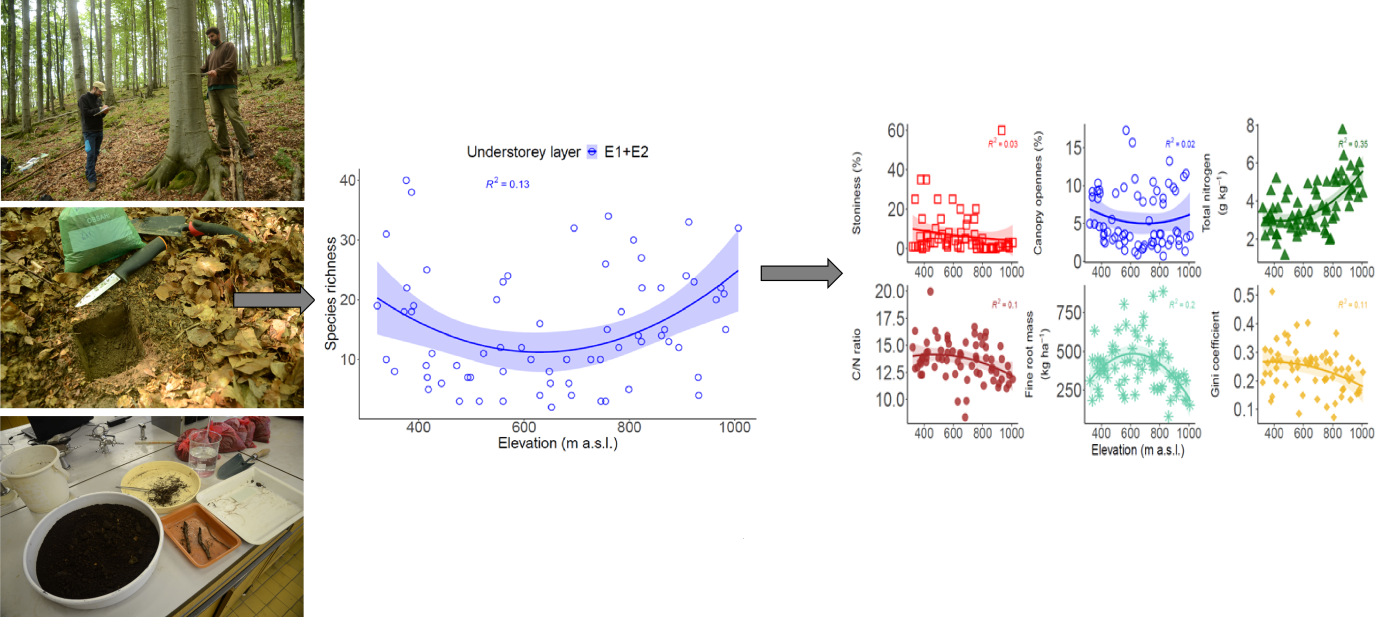
The study of plant diversity along altitudinal gradient has been interesting for the scientific community for a long-time. The response of species richness along the gradient varies specifically: a U-shaped pattern was identified in monodominant beech forests. Our study of the effects of environmental variables and dendrometric characteristics on species richness showed a strong mutual competition of trees and understory plants both above and below the soil surface. Beech tree fine root mass, canopy openness, soil nitrogen, and C/N ratio, the interaction between tree fine root mass and stoniness, and stand structural diversity explain the variation of understorey species richness. Beech tree fine root mass was the most important predictor of species richness. We show that the competition for soil resources is the main driver of plant species diversity in managed forests; maximising beech growth in optimal conditions may thus come at the expense of understorey plant richness.
This research was funded by project VEGA 1/0009/16: Species richness of vascular plants in undestory of beech forests along altitudinal gradient (Principal investigator Milan Valachovič).
Source: HRIVNÁK, Richard** – BOŠEĽA, Michal – SLEZÁK, Michal – LUKAC, Martin – SVITKOVÁ, Ivana – GIZELA, Jaroslav – HEGEDÜŠOVÁ VANTAROVÁ, Katarína – HRIVNÁK, Matúš – KLIMENT, Ján – KNOPP, Vlastimil – SENKO, Dušan – UJHÁZYOVÁ, Mariana – VALACHOVIČ, Milan – WIEZIK, Maroš – MÁLIŠ, František. Competition for soil resources forces a trade-off between enhancing tree productivity and understorey species richness in managed beech forests. In Science of the Total Environment, 2022, vol. 849, art. no. 157825. (2021: 10.753 – IF, Q1 – JCR, 1.806 – SJR, Q1 – SJR). ISSN 0048-9697.
Text and photo: Richard Hrivnák



